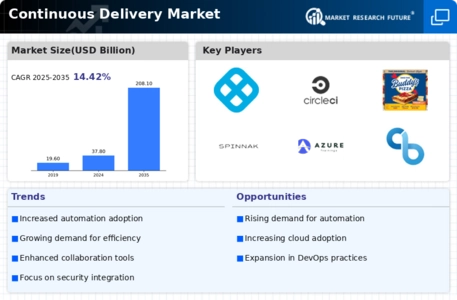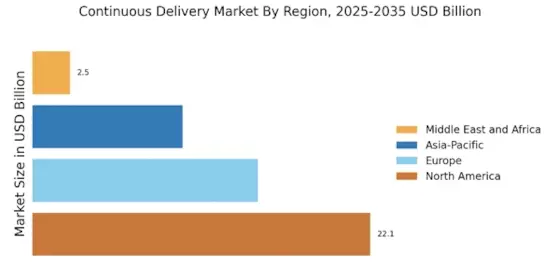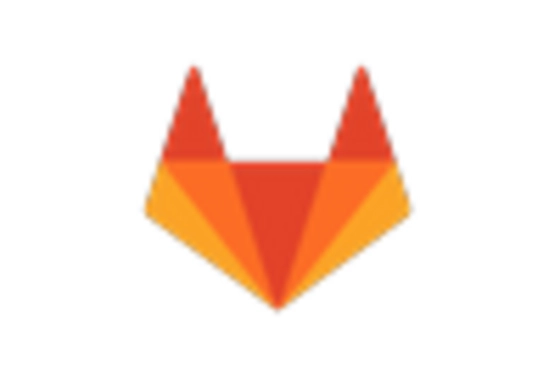Increased Focus on DevOps Practices
The Continuous Delivery Market is witnessing an increased focus on DevOps practices, which emphasize collaboration between development and operations teams. This cultural shift is fostering an environment where continuous integration and continuous delivery can thrive. Organizations adopting DevOps methodologies report a 50% reduction in lead time for changes, highlighting the effectiveness of this approach. The alignment of development and operations teams facilitates faster feedback loops and more efficient problem resolution, ultimately leading to higher-quality software releases. As more companies recognize the benefits of DevOps, the Continuous Delivery Market is likely to expand, driven by the need for seamless collaboration and improved delivery processes.
Growing Demand for Faster Software Delivery
The Continuous Delivery Market is experiencing a notable surge in demand for faster software delivery. Organizations are increasingly recognizing the need to accelerate their development cycles to remain competitive. According to recent data, companies that implement continuous delivery practices can achieve deployment frequency rates that are 30 times higher than those that do not. This demand is driven by the necessity for businesses to respond swiftly to market changes and customer feedback. As a result, the Continuous Delivery Market is witnessing a shift towards methodologies that prioritize speed and efficiency, enabling teams to deliver high-quality software at an unprecedented pace. This trend is likely to continue as more organizations adopt agile practices and seek to enhance their operational capabilities.
Rising Adoption of Microservices Architecture
The adoption of microservices architecture is becoming a pivotal trend within the Continuous Delivery Market. This architectural style allows organizations to develop and deploy applications as a collection of loosely coupled services, enhancing flexibility and scalability. By breaking down monolithic applications into smaller, manageable components, teams can deploy updates independently, reducing the risk of system-wide failures. Research indicates that organizations utilizing microservices can achieve deployment speeds that are up to five times faster than traditional architectures. This shift towards microservices is likely to drive further innovation in the Continuous Delivery Market, as businesses seek to leverage the benefits of modular development and continuous delivery.
Emphasis on Quality Assurance and Testing Automation
Quality assurance and testing automation are becoming increasingly critical in the Continuous Delivery Market. As organizations strive to deliver high-quality software rapidly, the need for robust testing frameworks has never been more pronounced. Automated testing tools enable teams to conduct thorough testing at every stage of the delivery pipeline, ensuring that issues are identified and resolved early in the process. Data suggests that companies implementing automated testing can reduce their testing time by up to 80%, significantly accelerating the delivery cycle. This emphasis on quality assurance not only enhances customer satisfaction but also strengthens the overall reliability of software products, making it a vital driver in the Continuous Delivery Market.
Integration of Artificial Intelligence and Machine Learning
The integration of artificial intelligence and machine learning technologies is poised to transform the Continuous Delivery Market. These advanced technologies can automate various aspects of the software delivery process, from testing to deployment, thereby reducing human error and increasing efficiency. For instance, AI-driven tools can analyze code changes and predict potential issues before they arise, streamlining the development workflow. The market for AI in software development is projected to grow significantly, with estimates suggesting a compound annual growth rate of over 40% in the coming years. This integration not only enhances the speed of delivery but also improves the overall quality of software products, making it a critical driver in the Continuous Delivery Market.


















Leave a Comment